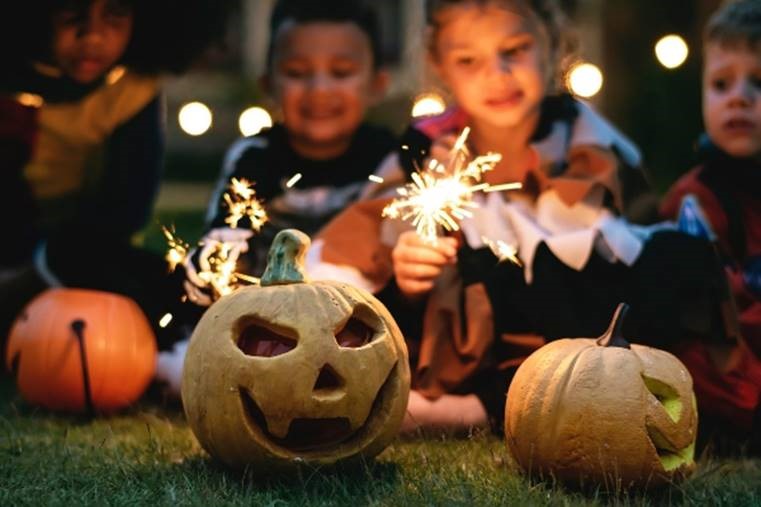It’s Halloween season! These days, people around the world are familiar with the American version of the holiday: costumes and trick-or-treating, jack-o’-lanterns and fun-sized candy bars.
Of course, that's not the only way to celebrate. Here's a quick look at some of the ways people celebrate Halloween around the world.
Ireland and scotland: samhain
The ancient Celtic festival of Samhain is the original Halloween. The origins of most of the famous Western Halloween traditions are found here. On Samhain, people began preparing for winter, bringing their herds back from their summer pastures and slaughtering livestock. As summer dissolved into winter, it was believed that the border between the world of the living and the world of the dead dissolved as well.
So, for one night, the souls of the dead, spirits, and fairy folk could easily cross into the physical world. To disguise themselves from evil spirits, people would dress in costumes. Then, they’d go from house to house reciting poetry in exchange for food. The souls of dead ancestors were honored with feasts, and bonfires were lit to keep the darkness at bay. Jack-o’-lanterns were carved out of turnips to frighten evil spirits away.
Some of these traditions, like costumes, jack-o’-lanterns and trick-or-treating, carried over into modern-day Halloween and are celebrated around the world. However, other Samhain traditions, like divination games and eating traditional foods, never attained the same global popularity.
Here are just a few Samhain traditions that are particular to Ireland and Scotland;
Ireland
- Dublin hosts a Samhain parade every year.
- Colcannon (mashed potatoes mixed with kale or cabbage) and barmbrack (sweet bread with dried fruits) are the traditional foods. Barmbrack is used for fortune-telling: charms are added to the loaf, and your fortune for the next year depends on which charm you find in your piece of barmbrack.
Scotland
- Sausage has been a traditional Scottish Samhain food since ancient times. In fact, the Witchcraft Act of 1735 actually made it illegal to eat pork pastries on Halloween. Fortunately, the act was repealed in the 1950s. Sausage rolls for everyone!
- The Beltane Fire Society hosts a Samhuinn Fire Festival every year in Edinburgh.
Japan: kawasaki halloween parade
Around the the world, Halloween is generally for kids. Not true in Japan, where Halloween celebrations have a decidedly adult overtone. There's no trick-or-treating, but there's plenty of cosplay and plenty of parties. Halloween celebrations have already caused chaos in Tokyo this year, and the day itself hasn’t even arrived yet.
The most prestigious Halloween event in Japan is the Kawasaki Halloween Parade, featuring around 4,000 costumed revelers. You can't just throw on any old thing and attend, however. They have standards, and participants must apply at least two months in advance to join the festivities.
Italy: ognissanti
In Italy, people celebrate the modern, imported celebration of “Halloween” alongside the older, traditional “Ognissanti” festivities.
“Ognissant” translates to “All Saint’s Day,” and it falls on November 1-2. However, people often begin the celebrations a day or two in advance.
During Ognissanti, tradition holds that the souls of the deceased come back to visit their living relatives. People decorate cemeteries with fall chrysanthemums. They leave food out for visiting spirits. In some parts of Italy, parents leave gifts out for their children on behalf of their dead relatives, almost like a miniature Christmas.
mexico: dia de los muertos
In Mexico, Halloween doesn’t hold a candle to El Día de Los Muertos, the Day of the Dead.
A colorful fusion of traditional indigenous customs and European traditions, Día de Los Muertos is a two-day celebration of ancestors and deceased family members.
According to legend, on November 1st and 2nd, the spirits of the dead come back to visit their families. The living celebrate them with flowers, festivals, sweets, and images of intricately decorated skulls and skeletons. They have picnics and light candles in cemeteries. While images of death are everywhere, it's important to understand that this isn't a scary or a sad holiday- it's a celebration of life, both past, and present.
guatemala: barriletes gigantes, giant kites festival
Guatemala also observes the Day of the Dead. Every year, the people of the towns of Santiago Sacatepéquez, and Sumpango celebrate with a unique twist: a giant kite festival.
To honor their dead, they build giant, brightly-colored kites from local natural materials and fly them in the cemeteries. This ancient Mayan custom goes back 3,000 years. Of course, these days it’s also become customary to share pictures of your favorite kites on Facebook and Instagram!
How are you celebrating the end of October? Whether you’re indulging yourself with candy, celebrating deceased loved ones, or a little bit of both, we hope you have a great time!
Often, cultural differences like this can be difficult to navigate effectively. Contact United Language Group to make sure your message is clear in all the languages you do business in.

